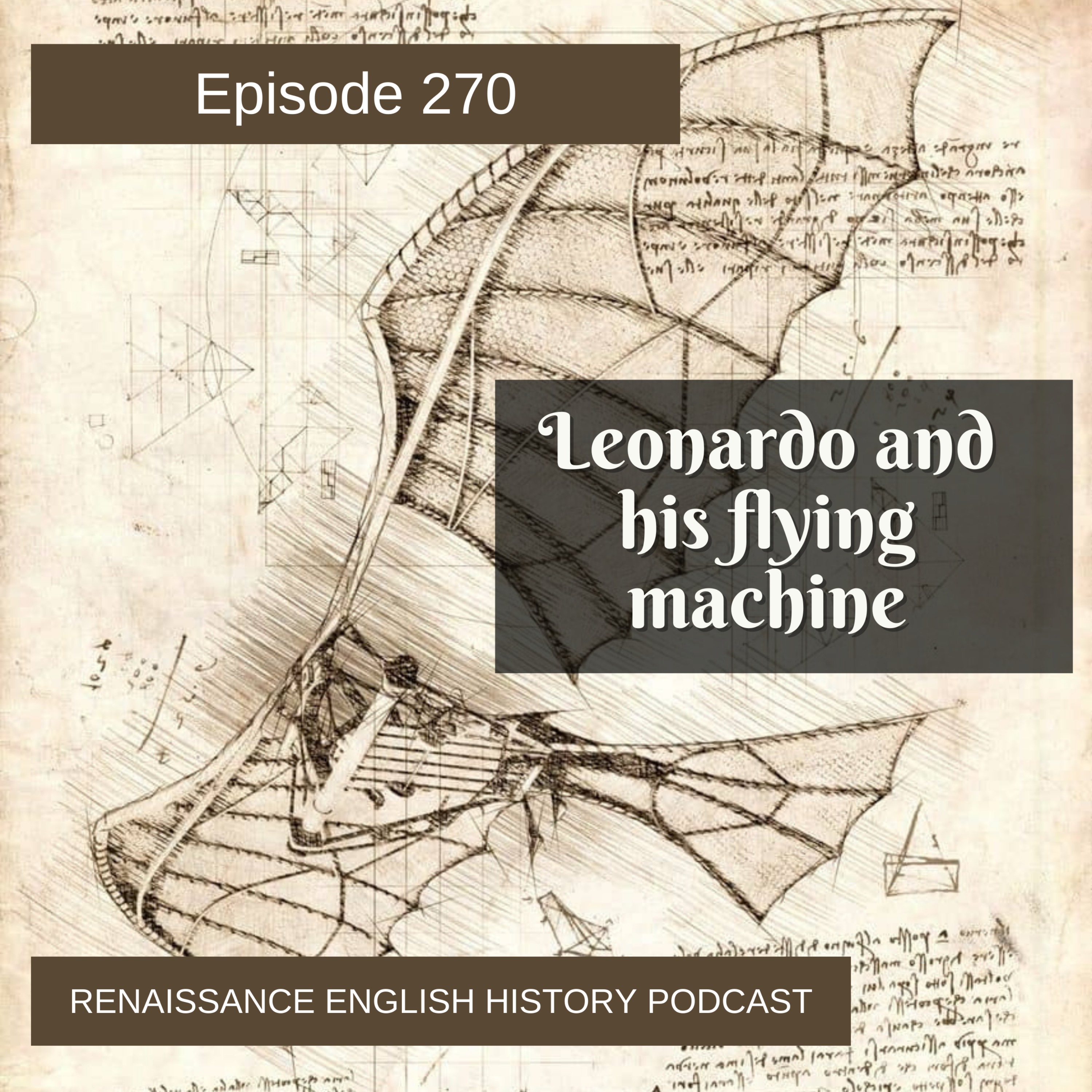
Episode 270: Leonardo and his flying machine

Renaissance English History Podcast: A Show About the Tudors
Deep Dive
What inspired Leonardo da Vinci's fascination with flight?
Leonardo da Vinci's fascination with flight began with his observations of birds. He marveled at how they soared effortlessly through the air and studied their anatomy and movement in detail, particularly in his Codex on the Flight of Birds.
What was Leonardo da Vinci's most famous flying machine design?
Leonardo da Vinci's most famous flying machine design was the ornithopter, a device that aimed to mimic the flapping motion of bird wings. It was powered by human effort, with the operator using their arms and legs to move the wings.
Why was Leonardo's ornithopter design impractical?
The ornithopter design was impractical because it required the human operator to generate enough force to lift both their body weight and the machine itself. The materials available at the time, such as wood and canvas, made it impossible to achieve the necessary power-to-weight ratio.
What was Leonardo da Vinci's aerial screw, and how did it work?
Leonardo's aerial screw was a precursor to the modern helicopter. It consisted of a spiral-shaped structure designed to be rotated manually, theorizing that the screw shape would bite into the air and create lift. While it was not practical due to the lack of an engine, it demonstrated Leonardo's innovative thinking.
How did Leonardo da Vinci's parachute design perform in modern tests?
In 2000, British skydiver Adrian Nicholas built a replica of Leonardo's parachute using period-accurate materials and successfully descended from a hot air balloon. While it was heavier and less maneuverable than modern parachutes, it worked as Leonardo described, proving his understanding of aerodynamics.
What was Giovanni Battista Dante's contribution to the history of flight?
Giovanni Battista Dante, an Italian mathematician and engineer, allegedly created mechanical wings and attempted to glide from a tower in Perugia, Italy. While the details of his flight are uncertain, the story symbolizes the Renaissance spirit of experimentation and daring.
How did Fausto Veranzio's parachute design differ from Leonardo's?
Fausto Veranzio's parachute design, called homo volans, featured a square, sail-like canopy attached to a harness, resembling modern parachutes more closely than Leonardo's pyramid-shaped design. Veranzio's design demonstrated a clear understanding of drag and gravity.
How might Tudor England have reacted to the idea of human flight?
Tudor England, influenced by Renaissance ideas, would likely have viewed human flight with a mix of awe and skepticism. The Tudor court's love of spectacle and fascination with technological marvels suggests they might have been captivated by demonstrations of flight or parachute descents.
Who in Tudor England might have been intrigued by the concept of flight?
John Dee, a mathematician, astronomer, and mystic, would likely have been intrigued by the concept of flight. His extensive library and interest in mechanics, mathematics, and alchemy align with the Renaissance fascination with human potential and the limits of nature.
What does the Renaissance dream of flight symbolize?
The Renaissance dream of flight symbolizes humanity's growing confidence in its ability to understand and manipulate the forces of nature. It reflects the era's optimism in human potential and the belief that no challenge was too great for ingenuity and determination.
- Leonardo da Vinci's notebooks reveal his dream of conquering the skies.
- He studied bird anatomy and movement to understand flight principles.
- His ornithopter aimed to mimic bird wing flapping, while the aerial screw resembled a helicopter.
- His parachute design was later tested and proven functional.
Shownotes Transcript
Let's talk about the Renaissance dream of flight focusing on Leonardo da Vinci and his flying machine plans, and then how Tudor England may have reacted to those experiments. If you're flying this holiday season, think about Leonardo and his plans for flight as you're boarding. your plane.
Join Patreon to get more episodes, ad-free episodes, minicourses, author chats, and more!
https://www.patreon.com/englandcast) Hosted on Acast. See acast.com/privacy) for more information.